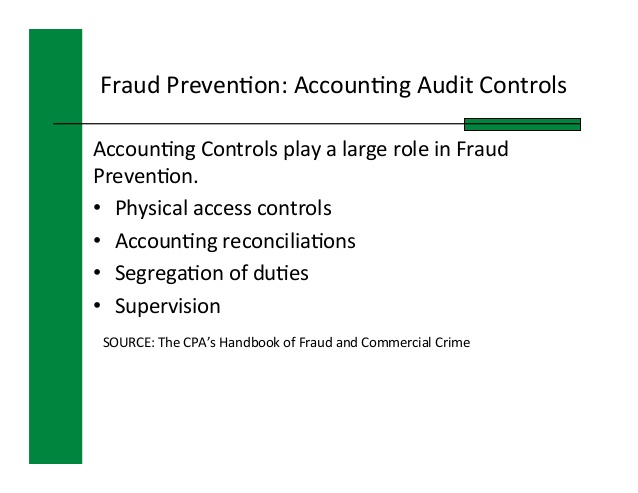Opponents of cryptocurrency often claim that cryptocoins are massively used in money laundering, trafficking in drugs, weapons, financial crimes, and terrorist financing. Articles regularly appear in the press about the next break-in of cryptobirds or money laundering through bitcoins . We figured out what is behind such fame and what the scale of the problem.
Hacking cryptocurrency exchanges and wallets
Most of all fraudsters stole from cryptobirth – it is often easier to crack them than a single wallet, and the potential income is disproportionately more.
According to Group-IB, CipherTrace, Carbon Black, in 2018, hackers stole cryptocurrencies in the amount of $ 1.1 to $ 1.7 billion, of which $ 960 million came from cryptobirds and payment systems. The number of such cases increased by 3.5 times compared with 2017, and 7 times compared with 2016. 56% of crypto-theft occurred on the stock exchanges of South Korea and Japan.
The biggest thefts in 2018 :
- $ 532 million from Coincheck
- $ 60 million from Zaif
- $ 40 million from Coinrail
- $ 31 million at Bithumb
In most cases, the causes of the theft were the vulnerability of hot cryptocurrency wallets , where users' funds were kept.
Hackers work in teams, not one by one
Interestingly, most hacker attacks are not committed by loners, but by team players. According to a recent study by analytical company Chainalysis, 2 groups of hackers spent 60% of all registered crypto-burgers and totally stole cryptocurrencies worth more than $ 1 billion.
The researchers identified the hacker groups as Alpha and Beta. Alpha is a gigantic, tightly controlled organization that pursues not only monetary goals. “Beta” is less organized, monitors security worse and is completely focused on money.
Both groups operate with stolen cryptocurrencies differently. “Alpha” transfers the coins immediately after hacking, “Beta” – within 18 months. Hackers wait at least 40 days until the interest in the theft subsides, after which they try to cash the coins as quickly as possible – 50% of all stolen funds are cashed within 112 days.
Usually, hackers steal coins for $ 90 million at a time, but the number of “minor thefts” has increased by $ 20- $ 30 million. After theft, on average, they pass stolen cryptocurrency about 5000 times through the system of wallets, exchangers and peer-to-peer transactions before exchanging them for fiat currency.
Sometimes even regulated exchanges that follow strict AML procedures — anti-money laundering processes — are sometimes used to cash out. It is difficult to track down stolen or laundered money – you can only learn about the origin of money after the fact, but not in real time.
Researchers believe that both groups are likely still active.
Fraudulent ICO and fake Twitter accounts
According to various sources , from half to 80% of ICOs were initially created as fraudulent: their organizers are aware of the project’s unrealizability, and much of the funds raised are spent on personal or advertising purposes. At the same time, in 2017, at the expense of ICO, from $ 5.6 to $ 6.2 billion were attracted.
Since ICOs are not regulated at all, their organizers have no responsibility towards investors. According to the European Center for the Analysis of Cybercrime of the EU, in 2017–2018 scam projects led to a loss of $ 1.4 billion by investors.
Perhaps the most striking example of ICO-fraud in 2018 is the American project Centra. In the spring, a project that advertised boxer Floyd Mayweather and other celebrities, by deceit, raised $ 32 million, after which the leadership tried to flee the country. In November, a funny incident occurred with the Pure Bit scam project – the startup manager first ran away from $ 2.7 million, and then repented and returned the money to users.
In 2018, so-called “Nigerian letters” were also popular on Twitter – a type of fraud, when fake celebrity pages promise to distribute coins for free in exchange for a small payment. Fraud is quickly revealed, but the fakes can earn a few thousand dollars, and the whole "industry", according to some estimates , brings from $ 50,000 to $ 100,000 per day.
Phishing, hidden mining, cryptojacking and extortion
One of the most popular schemes to trick users is phishing – creating clone sites of famous exchanges, ICO projects and wallets (86% of fakes are MyEtherWallet wallet). When users enter their data in a phishing program, attackers gain full access to the victim’s accounts. Judging by the data from Kaspersky Lab, every quarter, criminals steal in this way for $ 2- $ 3 million.
Illegal mining – cryptodocking is also common when criminals use an infected computer for imperceptible mining to their advantage. The number of such cases in 2018 increased by 4 times, about 13 million devices were infected with viruses.
At first, cryptodoping was used for mining, and over time, it was also used to carry out DDoS attacks and other cybercrime. The main victims of cryptodikeking are companies. According to Carbon Black, attacks on businesses accounted for one fifth of all hacker attacks.
Cyber-extortion is another new form of cybercrime. Viruses encrypt files on the infected computer, and then require a ransom in the cryptocurrency for the decryption key. Vivid examples: CryptoWall, Locky, KeRanger, XCodeGhost, WannaCry, NotPetya. According to estimates by the Cyber Threat Alliance, ransomware viruses could sum up a total of $ 325 million from their victims.
Laundering of money
Due to the anonymity and legal uncertainty of cryptocurrency, it is customary to accuse them of using money laundering. According to Europol and the UK, $ 5.5 billion a year is laundered through cryptocurrency. 97% of criminal bitcoins are laundered through exchanges with weak AML policies.
The researchers claim that the share of illegal transactions with Bitcoin decreases every year and amounts to 0.6% -1% of all transactions (according to Japanese data , only 0.19%).
According to the UN, the annual volume of illegal transactions is $ 1- $ 2 trillion. Against this background, $ 1– $ 2 billion seems insignificant — it is a tenth of a percent. The total capitalization of Monero, Dash and ZCash is $ 2.2 billion at the moment. Obviously, the money supply laundered through cryptocurrency funds is negligible.
Terrorists and drugs
Link cryptocurrency with drugs have become since the days of Silk Road . According to official data , the turnover of the site was about $ 1.2 billion, revenue – $ 90- $ 126 million, it was used by several thousand illegal sellers and more than 100,000 buyers worldwide.
According to the Foundation for the Struggle for Democracy (FDD), drug trafficking accounts for up to 90% of all illegal cryptocurrency transactions. The annual turnover of such trade can be $ 4– $ 5 billion, reach 0.5% -1% of the total turnover and cover up to a third of all buyers.
As for terrorism, according to the Europol report and the UK government commission , Bitcoin and other cryptocurrencies have not been used recently to finance terrorist attacks in Europe and it is unlikely that the situation will change in the next five years.
A study by the Center of a New American Security suggests that terrorists do not understand cryptocurrency technology well and prefer cash and bank transfers as more convenient and secure. But experts warn that the situation may change if terrorists “try out” the technology and begin to trust it.
Cryptocurrencies are not as good for criminals as it seems
Due to the anonymity of transactions , the speed of transfers to bypass financial organizations and the lack of need to pay taxes, cryptocurrencies seem to be ideal means for avoiding taxes, money laundering and buying weapons. But in fact, they are not as convenient for criminals as it may seem. The numbers say that cryptocurrencies are not as popular among criminals as is commonly believed.
The experience of fighting the darknet shows that the state is able to fight cybercrime, and the anonymity of cryptocurrencies is greatly exaggerated – anonymously exchanging money is becoming more difficult, the security services are able to associate transactions with a specific user, which even super-anonymous coins cannot save . In such conditions, cryptocurrency is a superfluous intermediary link, because cash is more difficult to track.
If you combine the figures above, then over the past 2 years, it is very possible to say that $ 13- $ 16.7 billion of funds rotating in cryptomir can be called criminal. Much or little depends on the size of the crypto market capitalization. With a capitalization of $ 700 billion, this is only 2%, with a capitalization of $ 100 billion – already 13% -16%. But it is obvious that against the background of criminal trillions of dollars, this is an insignificant value.
Fiat cash is used by criminals hundreds of times wider, but this is not a reason for their prohibition. It is clear that cryptocurrency, as a tool of crime, is much less versatile and convenient than their traditional counterparts.
Publication date 09.02.2019
Share this material on social networks and leave your opinion in the comments below.

